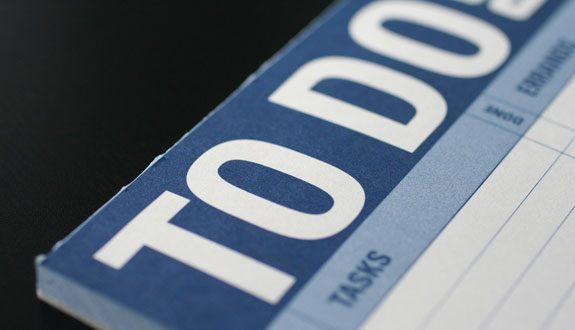
Law school isn’t going to pay for itself. So how are we, the prospective law students, supposed to deal with the terrifying dollar signs that float ominously in the corners of rooms, casting cold shadows and humming with portents of financial doom (or is that just me…)? Let’s, uh … let’s look at some options for how to pay for law school.
I’m not gonna lie, this topic is a bummer. So to help break the tension, I’m going to try to keep things interesting by sprinkling some non-standard tips* (in green) for financing law school every couple paragraphs, okay? For example:
Alternative Financing Method Break #1:
- Come into a massive trust fund. No, a bigger one than that.
How Much Does Law School Cost?
Before jumping into how to pay for law school, let’s talk about how much your legal education will actually cost. In 2023, the average private law school yearly tuition was $55,963, according to Law School Transparency. The average public law school tuition was $30,554. This did not include any fees or additional living/educational costs. Unfortunately, law students don’t just pay the tuition sticker price. Thus, when thinking about how much law school will cost, you need to really consider how much you might need to pay. This is called the Cost of Attendance (COA). There are several ways to figure this out, but a loan calculator will make the math much easier. A loan calculator will help you tally up current student loans (including interest), cost of attendance, tuition and fees, and living expenses. A good loan calculator will also let you factor in some of the more “hidden” costs of law school, like books, parking and transportation, and prep classes for the bar exam.On average, 2022 private law school graduates borrowed $135,183. Public school graduates borrowed $93,643, on average. When considering the total cost of law school, it’s important to consider the value you will be getting in return. Make sure the payoff is worth the cost. Do some research on expected starting salaries and job placement rates.
Download our Top Law School Guide to see employment and grant stats for the top 20 law schools.
Take a deep breath. All right. Now that you have a clearer idea of the amount of money that your law school journey might cost, let’s start looking at how to pay for it.
How To Pay for Law School
This topic is huge. We’ve written about student loans, student loan forgiveness,
and law school scholarships before. We’ll write about it again.
When it comes to financing law school, there are three main avenues for exploration:
- Grants and scholarships: Money that you don’t have to pay back.
- Federal student aid: Remember your friend from undergrad, the FAFSA?
- Private loans: Buyer beware. This is the danger zone
Order is important here. Not all financing options are created equal, and some have more sting on the back end than others.
Merit vs Need-Based Financial Aid
As you go through your options for how to pay for law school, you’ll come across scholarships and other aid that are either merit or need-baed. So what’s the difference?Merit-based aid is based on a student’s achievements. Commonly, schools and scholarship orgs will look at your GPA, LSAT score, and other achievements to determine eligibility. However, need-based aid provides support based on your level of financial need. Federal student aid is an example of need-based aid. Alternative Financing Method Break #2:
- Convince the American Bar Association that your living room actually houses a law school that should be accredited, c’mon, guys, be cool.
- Sell that $160,000 yacht that’s been sitting out in the garage gathering dust for years.
Law School Grants and Scholarships
The best kind of money you can get is the kind that’s (more or less) free. Applying for grants and scholarships, while somewhat time-intensive, is the financial aid option that’s least likely to land you in any debt.
There are different types of grants and scholarships. Additionally, some law schools will automatically consider applicants for their schools’ scholarships based on merit or financial need.
There are dozens of places to look for legal scholarships, but LSAC is a good place to start your search. Yale Law also has a decent starter list. You can also apply to Blueprint’s $20,000 Law School Scholarship Giveaway.
Further Reading
💰 Law Schools That Offer Full-Ride Scholarships
Once you’ve applied to a law school, start filling out scholarship applications ASAP. Even if you don’t ultimately decide to attend, having a better idea of the amount of money involved can only help your decision-making process. Be sure to check a wide variety of scholarships to see if you’re eligible for financial aid.Alternative Financing Method Break #3:
- Make coffee at home.
- Become a cat influencer.
Federal Student Aid – Federal Loans
When thinking about how to pay for law school, federal loans are still your safest bet when it comes to borrowing money. Remember filling out the FAFSA when you applied for undergrad? I hope so, because you’re going to do it again for law school! There are some helpful guides — not to mention LSAC — that’ll help walk you through the process in case it’s been a few years since you last did the paperwork.Based on the FAFSA, you might also qualify for school-based loans, scholarships, federal work-study programs, and/or state aid (depending on your state’s financial aid policies).Federal loans come with some benefits that private loans don’t necessarily cover, like fixed interest rates and deferred payments. Federal loans are also more likely to be covered by loan forgiveness programs.After filling out the FAFSA, you’ll have a better idea of the federal, state, and school financial aid you qualify for. Different types of options include federal direct loans (previously known as Stafford Loans) and direct graduate PLUS loans.
Federal Direct Unsubsidized Loans
The Federal Direct Unsubsidized Loan program allows law students to borrow up to $20,500 each year from the U.S. Department of Education. While this loan does carry interest, it is not compounding while you’re in school. Once you graduate, you have a six-month grace period before you need to start repaying. Additionally, repayment plans, payment relief, and refinancing are available if you need/qualify. This type of loan also qualifies for the Public Service Loan Forgiveness (PSLF) program.
Federal Direct PLUS Loan for Graduate Students (Grad PLUS)
A Grad PLUS loan requires either solid credit or an “endorser.” You can borrow up to a school’s total COA minus the amount of the other financial aid you are receiving (including scholarships, grants, and other loans) for the year.Interest begins to accrue once the loan funds are dispersed, but repayment is deferred while you are in school and for six months after you are no longer enrolled. Additionally, repayment plans, payment relief, and refinancing are available if you need/qualify. This type of loan also qualifies for the Public Service Loan Forgiveness (PSLF) program.
Sign up to get expert tips and exclusive invites to free LSAT classes and law school admissions workshops!
Private Loans
And if grants, scholarships, federal loans, federal work-study, and your own savings don’t cover the full cost of your legal education, then you can turn to the private sector.
Private loans tend to be more expensive, but sometimes it’s a choice between going to law school and taking a private loan or passing on law school altogether.
That’s a choice that only you can make.
Private loans can help you pay for any additional costs including your law school tuition, living expenses, and other expensive fees. These loans are based on credit and are available through a bank or credit union with fixed or variable interest rates.
Federal Work-Study Programs
Federal Work-Study provides funding for full-time students to work part-time during the school year and full-time during the summer months. Students sometimes work on campus in a variety of settings or off-campus nonprofit agencies. Not all law schools participate in the Federal Work-Study program. Always be sure to check with your school’s financial aid office to see if they offer it.
Veterans Educational Assistance
If you’re a veteran, the US Department of Veterans Affairs offers benefit programs to help pay for law school. The 9/11 GI Bill assists with tuition and fees, a monthly housing allowance, an annual books and supplies stipend, and a one-time rural benefit payment for eligible individuals. The Yellow Ribbon Program assists with tuition and fees not covered by the 9/11 GI Bill. However, these benefits cannot be transferred to dependents. For more information, check with the US Department of Veterans Affairs and the veterans’ benefits coordinator at your chosen law school.
How to Apply for Law School Financial Aid
Many law schools receive some type of aid to help offset the cost of law school. Whether it’s merit or need-based aid, the most important thing to remember is to stay organized to ensure you don’t miss your chance to apply for aid. Follow these general steps to help you stay on top of it.
- Research and identify all financial aid application requirements and deadlines for every school you want to attend.
- Gather all necessary documents you’ll need to apply for financial aid.
- Complete the Free Application for Federal Student Aid (FAFSA).
- Provide any additional information requested by law schools.
- As law school acceptances start to pour in, review the financial aid awards you receive from each school.
- Apply for loans, as needed.
Final Words of Advice
Law school admissions is tough. Figuring out how to pay for law school is another challenge that most law school students eventually face.
Before you get mixed up with law school student debt, explore all of your financial aid options, including law school loans, law school scholarships, and law school grants.
Additionally, make sure to check out the thousands of private scholarships that law school students may be eligible for. Doing extensive research and having a repayment plan and strategy planned out beforehand can help the process seem more approachable.
However, if you want to increase your chance of receiving a merit-based award or securing an acceptance at a school with historically generous financial aid packages, focus on getting a competitive LSAT score!
Blueprint LSAT students increase their LSAT scores by 15 points on average. Whether you have the discipline to study on your own with a Self-Paced Course, want to navigate the LSAT with instructors in a Live Course, or prefer one-on-one attention through tutoring, we have the study method that fits your learning style.
Create a free Blueprint LSAT account to get started for free and access a practice LSAT exam with explanations and in-depth performance analytics!
*Note: Blueprint does not officially endorse any of these alternative methods. Unofficially? What are you, a cop? Still no. Mostly.




